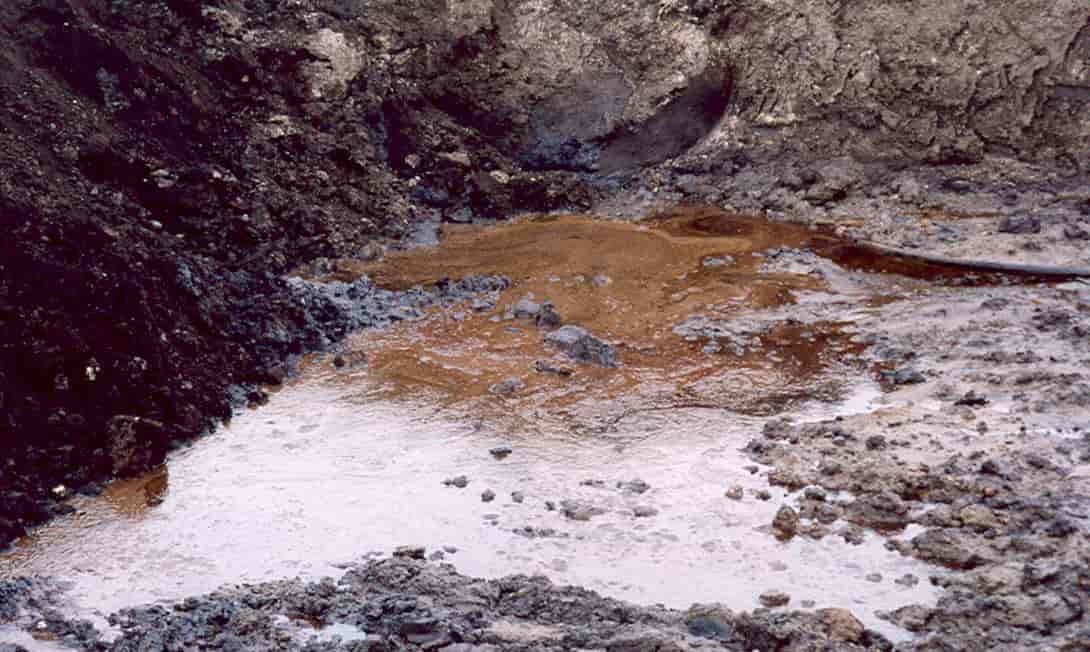What Is A Phase 2 Environmental Site Assessment
A Comprehensive Guide To Prepare For Your Phase II ESA
Hire DeepEarth For Your Site RemediationEducational Content Advisory
Please Note: The information provided on this page is intended for educational purposes only. At DeepEarth Technologies, Inc., we are committed to sharing our expertise and insights into various aspects of our industry to enhance understanding and knowledge. However, it's important to clarify that we specialize exclusively in site remediation services and do not provide site assessment services. We hope this content enriches your understanding of the broader field, even as we continue to focus on our area of specialization.

What Is A Phase II Environmental Site Assessment?
A Phase 2 Environmental Site Assessment, or (ESA) is a detailed subsurface investigation of a site or property that is carried out to measure the presence - or potential presence - of environmental contaminants.These investigations generally look for pollutants and other hazardous materials in soil, groundwater, the air, and even surface water.
Typically Phase 2 ESAs are conducted only after a Phase 1 ESA has picked up noticeable environmental concerns that require further investigation. During a Phase 2 ESA, soil water and air samples will be collected from the site to analyze them for any contaminants. If it is determined treatment is necessary, then a Phase 3 ESA will be required as well.
The whole purpose of a Phase 2 ESA is for environmental professionals to study the samples taken from the site or property to discover the extent of potential contaminations. After thoroughly inspecting the samples, laboratory analysis and various types of investigations - using the information obtained - they will determine the potential health risks associated with their findings - if any. If any hazards are found, they will develop a strategy to manage any risks found during the investigation.
Environmental consultants, engineering firms, or geologists familiar with site investigations & remediation typically carry out Phase II Environmental Site Assessments. Each investigation should conclude with a report that includes recommendations moving forward. These recommendations can be anything from a further investigation - called a Phase 3 ESA - to recommended remediation methods. In addition to these recommendations, your consultant will include a summary of their findings called a Phase 2 ESA report.

How Long Does A Phase 2 ESA Take?
Of all environmental site assessments, Phase II usually takes around a month to complete. Phase II can be done in around three weeks, but it's always best to assume it will take about a month from start to finish. Getting a company to conduct the required soil and groundwater samples necessary to perform the site assessment takes time.
However, this process can be sped up if you decide to hire a company that also carries out sampling. The good news, however, is after the ESA is finished, you'll usually get the results back within a week.

How Much Do Phase 2 ESAs Cost?
The price for a Phase 2 Environmental Site Assessment can differ drastically, depending on many site specific factors. The factors include - but are not limited to:
- Whether or not monitoring wells need to be installed
- Any situational constraints
- Presence Of Underground Tanks
- Presence Of Aboveground Tanks
- Difficulties accessing subsurface
- If underground lines have to be marked
- Method of sampling
- Type of lab work required
- Scope of work
- Other factors
In general, it's safe to assume that Phase II will cost - conservatively - at least $5000, but depending on the requirements of your specific situation, it could cost upwards of $30,000, easily. However, if you're selling the property, it will greatly improve the property value.

What Is The Goal Of A Phase 2 Assessment?
The ultimate goal of a Phase 2 Environmental Site Assessment is to determine the environmental risks associated with your site or property. Assuming the risk potential is acceptable, and all hazardous substances are nonexistent or within the acceptable levels, you'll be able to close the project. Once you've achieved site closure, you'll be given permission to move forward with any plans you had for the project.
However, if the phase II ESA determines a significant level of hazardous substances, you will be required to conduct a phase III ESA.
Generally, when contaminants are found in soil or groundwater, your environmental professional may recommend certain bioremediation services. More often than not, some environmental drilling will be required to introduce various remedial reagents to break down and destroy the present contaminants.
Their goal during Phase II is to develop a plan to deal with any environmental contamination, hazardous substances, etc. During this process they will aim to create a plan that will help your site comply with all Federal regulatory guidelines.
Your environmental professional will recommend either ex-situ or in-situ remediation to help deal with the contaminations in your site.
Ex-situ deals with removing the contaminated materials off-site so they can be treated and reintroduced to your site.
In-situ - whether in situ oxidation, in situ reduction, or both - is much less expensive because there are no handling fees, and all of the material stays on-site.
Phase II ESAs Result In One Of Two Outcomes
Remediation Is Required
If it's discovered that contaminant concentrations are far too high, then it can be determined that the only solution would be remediation. If this is the case, then the next step would be a Phase III ESA. As discussed in the last section, remediation generally only has two approaches - ex-situ and in-situ.
Ex-Situ
Ex-situ remediation involves machinery used to extract the contaminated soil, load it up, and treat it off-site. The benefit of ex-situ remediation is that specialists can control every aspect to ensure contaminants are successfully destroyed during treatment.
However, the drawback of this type of remedial solution is that it's much more expensive than in-situ remediation. Not only is it more expensive, but often if the soil is missed - meaning contaminants are left behind - it will be impossible for them to be effectively dealt with. Some companies have solutions for this problem, but it is one of the most significant downfalls of ex-situ remediation.
In-Situ
In-situ has various methods for dealing with contaminants in place. Usually, this involves some drilling technology, whether rotary drilling, sonic drilling, or DPT injections. Other techniques besides drilling include hand lances for use on smaller sites or even soil mixing. We here at DeepEarth specialize in soil mixing and have closed many sites over the last two decades in the industry.
Soil mixing is one of the best approaches because it's affordable and effective, considering bioremediation specialists can make sure the appropriate reagent is effectively mixed with the contaminated materials to ensure the best results.
Nothing Else Is Required
If your consultant or geologist finds that your site is within the acceptable ranges, you may not be required to do anything else and can continue as you see fit. Whether building a business, a house or selling the property, you would be free to do so in this situation.
Which Types Of Sites Will Likely Need A Phase II ESA?
It depends on which types of sites are likely to have contaminants and environmental conditions beyond what is acceptable at a local, state and federal level. Ultimately if your site is required to undergo a Phase I ESA, it will be determined as to the likelihood that the site needs to have a Phase II ESA. The findings of the resulting subsurface investigation will ultimately decide what has to happen next.
Good examples of sites that would almost always need to be remediated would be any gas station, dry cleaner, etc. Anything where heavy concentrations of chemicals, hazardous materials, environmental pollutants, etc., are present.
These remedial services help to remove potential liability from the property owner.
Conclusion
In conclusion, a Phase 2 Environmental Site Assessment is just an investigation into the presence - or potential presence - of hazardous waste and pollutants on a site or property. They can be, on average, between $5000 - $30,000, depending on the requirements for the specific site, and you can expect an ESA to take around a month to carry out from start to finish. In addition, you will generally be given one of two situations as an outcome to your site investigation:
- A Phase III ESA needs to be conducted
- Nothing else needs to be done - you're in the clear
Get Your Site Back Today
Remember, while DeepEarth Technologies, Inc. passionately shares knowledge and educates on various topics, we do not offer site assessment services. Our services are specialized in site remediation.
If you've got a site contaminated with hydrocarbons or chlorinated solvents, you can either give us a call, request a quote, or contact us with any questions to be connected to an environmental specialist.
Request A QuoteGive Us A Call

